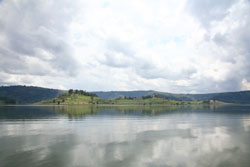New farms for new fish
The broad geographical area involving Ethiopia, Kenya and Uganda calls for the establishment of suitable sites for fisheries. To discover the most appropriate sites, the 'Integrating BOMOSA cage fish farming systems in reservoirs, ponds and temporary water bodies in Eastern Africa' (Bomosa) project used feeder technology and fingerling transport protocols as criteria. Project partners pioneered a hub and plot system to integrate agriculture with aquaculture in an effort to alleviate these poverty-stricken regions. The evaluation plots were established in these three regions, covering four climatic zones: humid areas, river/lake floodplains, highlands and semi-arid regions. While remote sensing was used to evaluate potential areas for the new sites, each was evaluated to meet the criteria of low cost, reliability, high accuracy, simplicity and universality. Additionally, veterinary and public health issues were addressed to ensure absolute food safety. This included evaluating water quality as a critical factor to ensure animal health. Cooking the fish was determined sufficient to ensure that no parasitic organisms entered the human food cycle. Bomosa also evaluated various feeding methods, developing feed packages and storage options. Agricultural by-products were examined for their nutrient values and criteria were established for diet potential ingredients based on local availability and abundance. The economic performance of these plots, as applicable to the individual farmer, was critical. Therefore, different strategies to reduce fish mortalities during transport and to increase overall productivity as well as smoking techniques for the perseveration of over-production stocks were developed. Bomosa also looked into the factors of social acceptance, which included ethical and perceived benefits, management and environmental issues. Addressing these allowed for the development of a successful strategy, maximising sustainable production and continuation of a successful Technology Information Plan even after the completion of the project.



